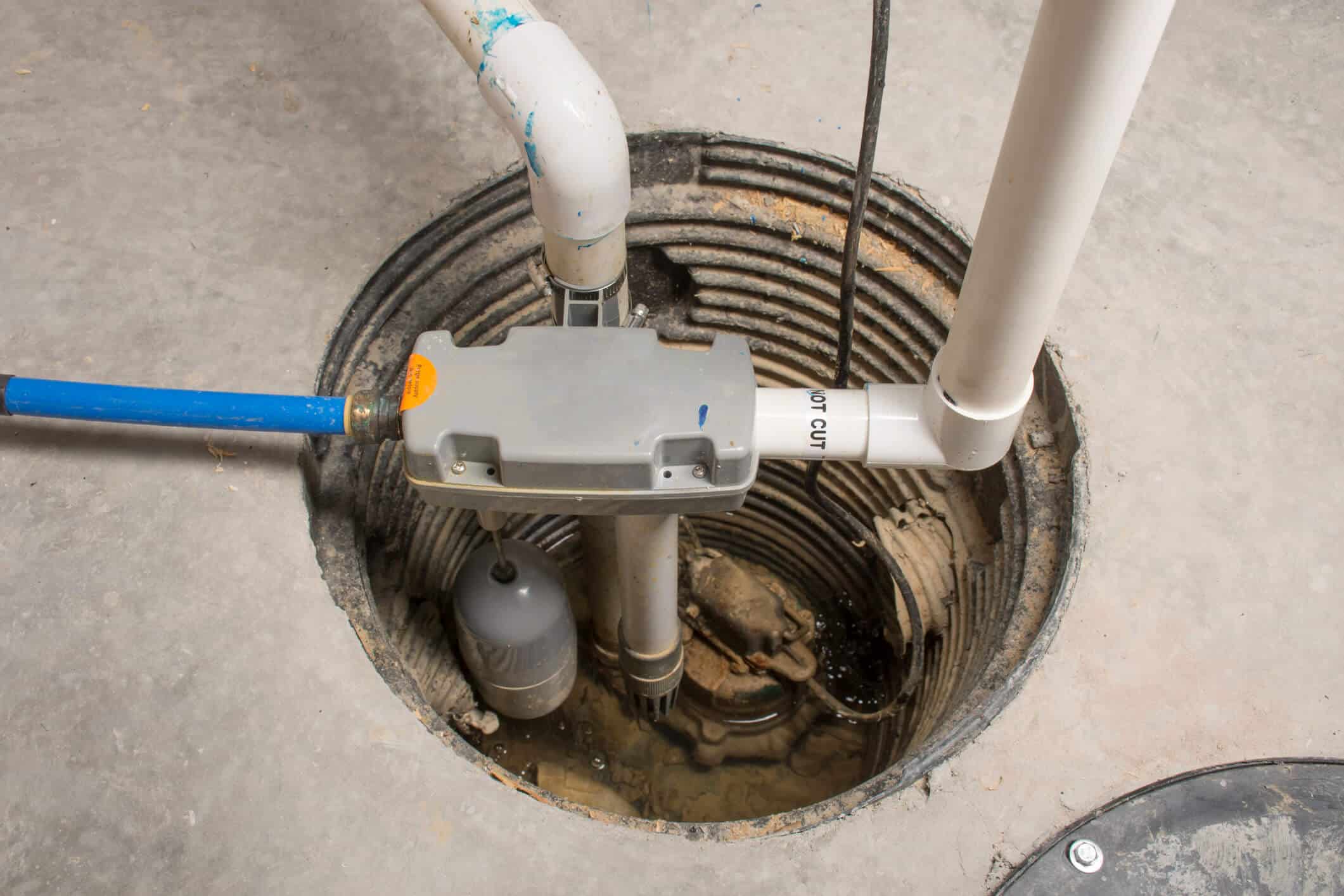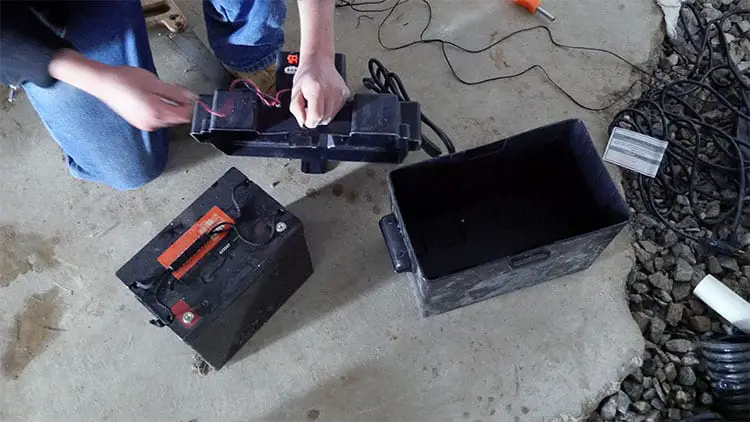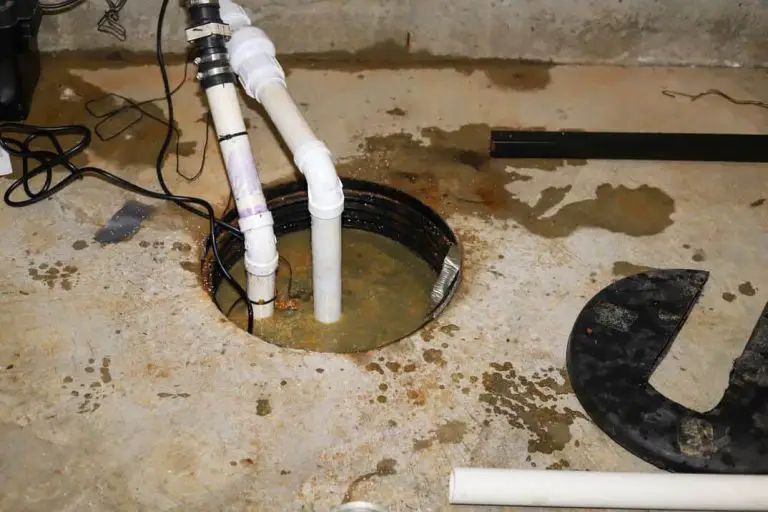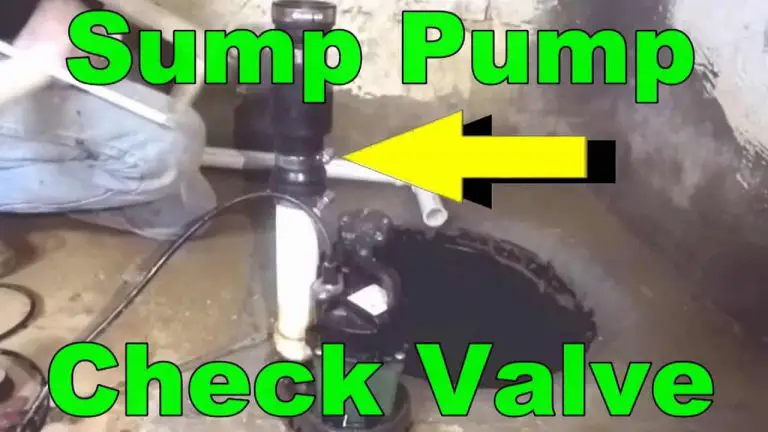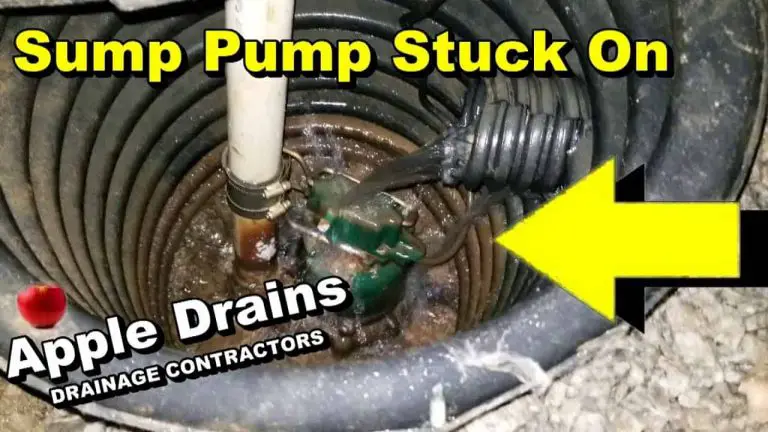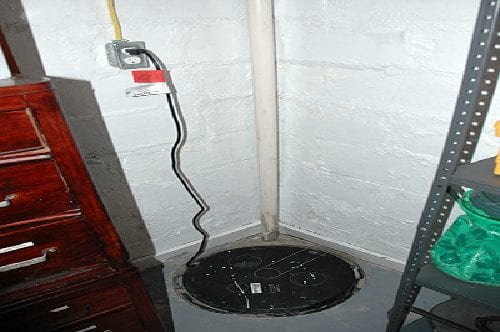Can Sump Pump Go Bad
A sump pump is a necessity for many homeowners, especially those who live in areas prone to flooding. But like any mechanical device, a sump pump can go bad over time.
There are several signs that your sump pump is starting to fail and needs to be replaced. If your sump pump has been in use for a while, it may be time to start thinking about replacing it.
Sump pumps can go bad for a number of reasons, and when they do, they can cause serious problems in your home. One of the most common reasons that sump pumps fail is because the float switch gets stuck.
The float switch is what turns the pump on and off, and if it gets stuck in the “on” position, the pump will run continuously. This can lead to overheating and eventually failure.
Another reason sump pumps fail is because the impeller gets clogged with debris. The impeller is what moves water through the pump, and if it becomes clogged, the pump will lose its ability to move water efficiently.
This can also lead to overheating and failure. If your sump pump has failed or is showing signs of wear, it’s important to replace it as soon as possible. A new sump pump can mean the difference between a dry basement and a flooded one!
6 Things Sump Pump Owners NEED to Know
Sump Pump Life Expectancy
A sump pump is a mechanical device that is used to remove water from an area. It is typically used in basements and crawlspaces to prevent flooding.
Sump pumps can last for many years, but their life expectancy will depend on several factors, including how often they are used, the quality of the pump, and the conditions of the environment where the pump is located. The average lifespan of a sump pump is about 10 years.
However, some pumps may only last for 5 years while others can last for 15 years or more. The key to getting the most out of your sump pump is to properly maintain it.
This includes regularly cleaning the unit and making sure that there is no debris blocking the intake or outlet. Additionally, you should check the float switch and make sure it moves freely. If your pump does not have a float switch, you should consider adding one as this will help prolong the life of your pump by preventing it from running dry.
How Often to Replace Sump Pump Check Valve
Your sump pump check valve is an important part of your home’s flood prevention system. This valve is located between the sump pit and the discharge pipe, and it prevents water from flowing back into the pit when the pump is not in use.
Over time, however, this valve can become clogged or damaged, which can cause problems with your sump pump’s performance. That’s why it’s important to know how often to replace sump pump check valves.
Most experts recommend replacing your sump pump check valve every two to three years. However, if you live in an area with high water table levels or frequent flooding, you may need to replace your valve more frequently.
You should also inspect your valve at least once a year to make sure it’s clean and free of debris. If you notice any leaks around your sump pump or its components, be sure to call a professional plumber right away. Leaks can lead to serious flooding issues in your home, so it’s best to nip them in the bud as soon as possible.
Sump Pump Failure What to Do
A sump pump is a critical piece of equipment in any home that relies on a basement or crawl space for storage. Without a properly functioning sump pump, water can quickly build up and cause extensive damage to your home and belongings.
If you experience sump pump failure, it’s important to take immediate action to minimize the potential for damage. The first step is to remove any standing water from the affected area.
This can be done with a wet/dry vacuum or by mopping up the water with towels. Once the area is dry, inspect your sump pump for any obvious damage or blockages.
If you can’t identify the problem, call a plumber or other qualified professional for assistance. In the meantime, you’ll need to find an alternative method of dealing with excess water.
One option is to use sandbags or other barriers to keep water from entering the affected area. Another possibility is to install a backup sump pump system so that you’re prepared in case of future failures.
No matter what course of action you take, it’s important to act quickly when faced with sump pump failure. By taking steps to mitigate the problem, you can minimize the potential for serious damage to your home and belongings.
Sump Pump Maintenance
A sump pump is a vital piece of equipment in any home that is susceptible to flooding. This type of pump is installed in the lowest part of your home, typically in the basement, and its purpose is to remove water that has accumulated there and prevent flooding.
While sump pumps are built to last, they do require some maintenance in order to keep them running properly. Here are some tips on how to maintain your sump pump: -Check the power source regularly.
Make sure the pump is plugged in and receiving power. Also, check the battery backup if your pump has one.
-Inspect the float switch monthly. This switch turns the pump on when water levels rise and turns it off when they fall back down again.
A stuck float switch can cause your pump to run continuously, so make sure it moves freely up and down. -Clean out the pit regularly.
The pit should be free of debris so that water can flow freely into it. Use a wet/dry vac or small shovel to remove any dirt or gravel that has accumulated.
-Test the pump regularly by pouring a bucket of water into the pit (with the float switch removed). The pump should activate and begin pumping out the water within seconds.
Who Replaces Sump Pumps
If your sump pump fails or needs to be replaced, don’t despair! You can easily replace your sump pump yourself with a little help from your local hardware store. Here’s what you’ll need to do: 1.
Turn off the power to your sump pump. This is usually done by unplugging the unit from the outlet or flipping the switch on the circuit breaker panel.
2. Remove the old sump pump by unscrewing it from the base and lifting it out of the pit.
3. Clean out any debris that may have accumulated in the pit, such as rocks or mud.
4. Place the new sump pump in the pit and screw it into place.
5. Reconnect all of the hoses and wires to their proper locations on the new unit.
How Long Do Zoeller Sump Pumps Last
If you have a basement, you know that a sump pump is an important part of keeping your home dry. But how long do these pumps actually last? On average, Zoeller sump pumps will last for about 10 years.
However, this can vary depending on how often the pump is used and how well it is maintained. If you use your pump regularly and keep it clean, it will likely last on the high end of this estimate.
However, if you only use it occasionally or don’t maintain it well, it may only last for a few years. To get the most out of your Zoeller sump pump, be sure to follow the manufacturer’s recommendations for maintenance and care.
This includes regular cleaning of the pump and its components as well as occasional replacement of parts that wear out over time. By taking good care of your pump, you can ensure that it will provide reliable protection against basement flooding for many years to come.
Sump Pump Not Working
If your sump pump isn’t working, it could be because the float switch is stuck or there is something blocking the impeller. If you have a submersible pump, check to see if it is properly plugged in. If you have an above-ground pump, make sure the discharge pipe is not frozen.
How Long Does It Take to Replace a Sump Pump
If your sump pump has failed, you may be wondering how long it will take to replace it. The answer depends on a few factors, including the type of sump pump you have and whether or not you need to install a new one.
If you have a pedestal sump pump, the process is relatively simple. You can usually do it yourself in about an hour.
If you have a submersible sump pump, the process is more complex and will likely require the help of a professional. Installation can take several hours.
In either case, if your sump pump needs to be replaced, it’s important to do it as soon as possible. A failed sump pump can lead to serious flooding issues in your home.
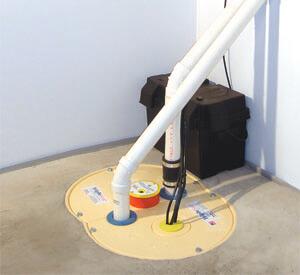
Credit: www.basementsystems.com
What is the Average Life of a Sump Pump?
A sump pump is a mechanical device that is used to remove water from an area. It is typically used in basements or crawlspaces where there is a potential for flooding.
The average life of a sump pump is about 10 years. However, this can vary depending on the quality of the pump and how often it is used.
How Often Do Sump Pumps Need to Be Replaced?
Sump pumps are one of the most important pieces of equipment in a home, as they are responsible for keeping basements and crawlspaces dry. Because of this, it is important to make sure that sump pumps are working properly and are replaced when necessary.
So, how often do sump pumps need to be replaced? The answer to this question depends on a few factors, including the type of sump pump, the quality of the pump, and how often it is used. Generally speaking, submersible sump pumps (the most common type) will last for about 10 years before needing to be replaced.
However, if the pump is not high quality or is used frequently, it may only last for 5 years or less. Pedestal sump pumps tend to have a longer lifespan than submersible pumps, lasting 15 years or more.
Again, though, if the pump is not high quality or gets a lot of use, it may only last half as long. To extend the lifespan of your sump pump and avoid having to replace it prematurely, there are a few things you can do.
First, make sure that you purchase a high-quality pump from a reputable manufacturer – this will go a long way in ensuring that your pump lasts for many years. Additionally, have your sump pump serviced regularly by a professional plumber to ensure that it is always in good working condition; catching any problems early on can help prevent major damage down the road.
Finally, try to use your sump pump as little as possible; for example, during periods of heavy rainstorms when water levels are likely to rise rapidly. By following these tips and replacing your sump pump every 10-15 years (or sooner if necessary), you can help keep your basement or crawlspace dry for many years to come!
What Happens When a Sump Pump Goes Bad?
If your sump pump goes bad, it could lead to some serious consequences. For one, if the pump is not able to properly remove water from your basement or crawl space, this could cause flooding.
Additionally, a malfunctioning sump pump could also cause your home’s foundation to become unstable and eventually collapse. If you suspect that your sump pump is not working properly, it is important to have it checked out by a professional as soon as possible.
What is the Most Common Reason for Sump Pump Failure?
Sump pumps are one of the most important pieces of equipment in any home, responsible for keeping basements and crawlspaces dry and free of water damage. But even the best sump pump can fail, usually due to one of three reasons: 1.
Power Outages If your sump pump is powered by electricity, a power outage is obviously going to render it useless. That’s why it’s always a good idea to have a backup power source for your sump pump, like a generator or battery backup system.
2. Clogged Impellers The impeller is the part of the pump that actually moves the water, so if it becomes clogged with debris it can’t do its job properly.
This is usually caused by dirt, gravel or other sediment getting into the pit where the pump is located. To prevent this from happening, make sure your pit is covered and keep an eye out for any debris that might fall in.
3. Frozen Pipes If your sump pump discharge pipe freezes solid, then water will back up into your basement or crawlspace since there’s nowhere else for it to go.
This is most likely to happen in cold weather when pipes are already at risk of freezing solid. To prevent this problem, insulate all exposed piping and keep an eye on the forecast so you can take action before a big freeze hits.
Conclusion
If you have a sump pump, you know that it’s an important part of your home’s flood protection system. But did you know that sump pumps can go bad? That’s right – even the best sump pumps will eventually need to be replaced.
So how do you know when it’s time to replace your sump pump? There are a few signs to watch out for: 1. Your sump pump is more than 10 years old.
Even if it’s been well-maintained, age will eventually take its toll on any mechanical device. If your sump pump is getting up there in years, it’s probably time to start shopping for a replacement.
2. Your sump pump isn’t running as often as it used to.
This could be a sign that the float switch isn’t working properly, or that the pump itself is losing power. Either way, it’s not something you should ignore! 3.
Your sump pump is making strange noises. This is almost always a sign of trouble and means you should unplug the pump and call a professional for help right away.
4. You’re having frequent flooding in your basement, even when there hasn’t been heavy rain or snow melt. If your sump pump can’t keep up with the water coming into your basement, it’s time for a new one!

